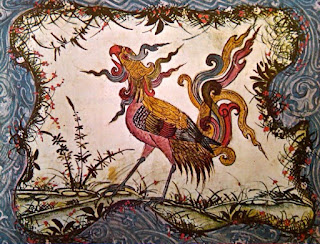Norse mythology
Norse mythology
A detailed account of how the ancient world was shaped, who gave it its shape, and why it began as a collection of disparate ideas and beliefs.
The first written record of Norse myth came from an anonymous Germanic poet known only as Guiderius Magnus in around 870 CE. He believed that the earth began with nothing but water, while other deities inhabited the land before this one. The idea of the Gods was based on his own experience at sea near what is now Denmark, where he saw many creatures that moved between rocks and waters and were created by themselves. These were called "deviants," and they were said to be ruled by different beings, some quite distant and unknown to him yet all around them, others close to their hearts. They inhabited the depths of seas, mountains, and even snow, having been cast down through time or released from the sun. Guiderius spoke of these things as "gods" because they all seemed to have lives outside this physical realm, which they defined as being limited in terms of space and time. This first form of Norse god would emerge several centuries later, during which time this concept was given more prominence by Christian writers.
The next step in the development of Norse myths would come after Christianity was established. By 958, when Pope Gregory (IX), who also claimed credit for introducing the story of Odin, had become pope of Rome, paganism was becoming more popular across Europe. It was then introduced into Scandinavia in 986 by William Clements (IX) (IX). Then in 1009, King Harold (IX) attempted to set up a court system that combined elements of both Roman Catholic and Pagan traditions, and this effort was called "the Viking Age." In this period, people began to adopt beliefs from a variety of sources, including Nordic folk folklore, early Church writings, and mystical texts.
By 1100 CE, however, the influence of Scandinavian peoples around Norway and Sweden had begun to decline. Around the same time, another book and a translation from Latin of an Anglo-Saxon poem named Beowulf provided much inspiration for many Europeans, giving rise to the beginnings of England's literary culture, or Old English. According to historian Jorgen Kallmose, the oldest surviving manuscript of Beowulf includes no references to Scandinavian pagan traditions, although numerous passages describe supernatural phenomena, and many passages in the epic suggest links with northern cultures such as Norway and Iceland. Because of this, the author of Hrothgar, a king in the Danish legend, declared himself “the son of God” (IX). By 1230, this belief became increasingly popular in parts of Northern Europe. The religion that arose in the new territory of the country was soon adopted by its neighbors and extended to Spain, Italy, France, Germany, Holland, and Scandinavia.
The most famous of the Nordic myths began to take life in the 15th century, with translations appearing in English of works by Chaucer, Geoffrey Chaucer, James Langton, and Robert Loach. An example of a traditional Norse tradition included in these works is the use of the word Ragnar (meaning, literally, “a man in disguise”) as a description of someone trying to deceive a man. Another famous tale, Grendel, tells the tale of a monster that has been outlawed throughout Scandinavia, unable to live among humans due to his desire for the flesh of human victims.
The Scandinavian legends that followed were not as diverse as those born in the Old World but were still richly varied. Some of these tales have led to various versions of events, and each of these works contains references and examples drawn from a wide range of religions and cultures. As the history of literature continued, the characters were given personalities, and each generation had new additions to its list of heroes. For instance, in medieval tales and sagas, a woman might appear naked and pregnant and find her way back into society disguised as a boy, and in modern Norse legends, there are similar stories, with their gods living in modern-day America. Most of the time, however, it is just stories. People continue to write about them without the need to justify any cultural norms or religious beliefs. Although they do not follow a strict pattern, the most common Norse mythology stories have common themes and motifs: power struggles between the gods and men and the fate of humanity; the protection of women from evil spirits and monsters; and so on.


Comments
Post a Comment